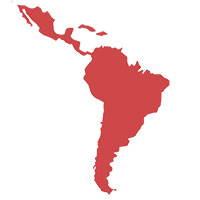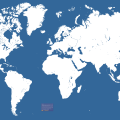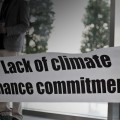The Climate Change Alphabet Soup
Ayesha C | December 11, 2014.
“COP20/CMP10 has kicked off in Lima, Peru against the backdrop of recent key events in the climate change arena from the IPCC SPM on AR5 to the US-China joint announcement of their post-2020 actions and the recent GCF pledges totalling US$9.7 billion.”
Chances are unless you are an expert in the field of climate change or simply obsessive, that sentence above made little to no sense to you. For many who are new to this space, and even the more seasoned, it is difficult to process the technical language around climate change let alone the plethora of abbreviations.
Climate change is complex enough without all of the abbreviations and acronyms for the various agreements, negotiation blocs, technical teams, and working groups. After every meeting, the list only seems to grow as new jargon is added. And it’s important to remember that acronyms are often explained through additional acronyms. Any attempt to understand the discussions and the process requires at least a basic understanding of what the different abbreviations mean. As the discussions heat up this week, here are some of the key ones you should familiarise yourself with if you are trying to follow the negotiations.
AF – Adaptation Fund
The Adaptation Fund was established to finance concrete adaptation projects and programmes in developing countries that are particularly vulnerable and are parties to the Kyoto Protocol. Among other sources, the fund is to be financed with a share of proceeds from clean development mechanism (CDM) project activities. It is operated by the Adaptation Fund Board.
ADP – Ad-Hoc Working Group on the Durban Platform for Enhanced Action
Ad-Hoc Working Group on the Durban Platform for Enhanced Action is a subsidiary body that was set up in 2011. The mandate of the ADP is to develop a protocol, another legal instrument or an agreed outcome with legal force under the convention applicable to all parties, which is to be completed no later than 2015 in order for it to be adopted at COP21 in Paris, and for it to come into effect and be implemented by 2020.
AR – Assessment Report
These are published materials composed of the complete scientific and technical assessment of climate change, generally in three volumes, one for each of the working groups of the IPCC: physical science, adaptation, and mitigation, together with summaries for policymakers and a synthesis report.
CBDR-RC – Common but differentiated responsibilities and respective capabilities
The concept purports that developed countries, as a result of their greater capacities and historical responsibility for climate change, ought to assume more responsibility for mitigation and financing efforts. It is enshrined within the UNFCCC and Kyoto Protocol.
COP – Conference of Parties
The supreme body of the convention. It currently meets once a year to work toward meeting the objectives of the convention. The word “conference” is not used here in the sense of “meeting” but rather of “association” as in “parties to the convention” or governments that have signed on. The “conference” meets in sessional periods, for example, the “fourth session of the conference of the parties.” Despite what the name suggests the COP is really a space for formal negotiations and not a recreational or educational event.
DP – Durban Platform
This refers to the outcomes of COP17 in Durban in 2011 which delivered a breakthrough on the international community’s response to climate change. In the second largest meeting of its kind, the negotiations advanced, in a balanced fashion, the implementation of the convention and the Kyoto Protocol, Bali Action Plan, and Cancun Agreements. The outcomes included a decision by parties to adopt a universal legally binding agreement on climate change as soon as possible, and no later than 2015.
GCF – Green Climate Fund
At COP16 in Cancun in 2010, governments established the Green Climate Fund as an operating entity of the financial mechanism of the convention. The GCF will support projects, programmes, policies and other activities in developing countries. The fund will be governed by the GCF Board. Parties aim to raise US$100 billion annually for this fund by 2020. Current pledges for the period 2016 to 2020 amount to US$9.95 Billion ($2.4 billion annually).
IAR – International Assessment and Review
The IAR process is conducted under the Subsidiary Body for Implementation (SBI) and aims to promote the comparability of efforts among all developed country parties. This is done with regard to their quantified economy-wide emission limitation and reduction targets. The IAR process comprises two steps: a technical review of the national reports of each developed country, followed by the multilateral assessment of the progress towards achieving the economy-wide targets of developed country parties.
INDCs – Intended Nationally Determined Contributions
INDCs bring together elements of a bottom-up system in which countries put forward their contributions in the context of their national priorities, circumstances and capabilities. Countries also propose the steps they will take to reduce emissions.
IPCC – Intergovernmental Panel on Climate Change
Established in 1988 by the World Meteorological Organisation and the UN Environment Programme, the IPCC surveys world-wide scientific and technical literature and publishes assessment reports that are widely recognised as the most credible existing sources of information on climate change. The IPCC also works on methodologies and responds to specific requests from the convention’s subsidiary bodies. The most recent assessment report, the fifth report, was finalised in October 2014. The IPCC is independent of the convention and politically neutral.
KP – Kyoto Protocol
An international agreement standing on its own, and requiring separate ratification by governments, but linked to the UNFCCC. The Kyoto Protocol, among other things, sets binding targets for the reduction of greenhouse-gas emissions by industrialised countries. It is the only agreement of its kind for climate change.
LDCF – Least Developed Countries Fund
LDCF was established to meet the adaptation needs of the least developed countries (LDCs). Specifically, the LDCF has financed the preparation and implementation of National Adaptation Programs of Action (NAPAs) to identify priority adaptation actions for a country based on existing information. It is administered by the Global Environment Facility.
LEG – Least Developed Countries Expert Group
A panel of 13 experts which provides advice to LDCs on the preparation and implementation of national adaptation programmes of action (NAPAs) which plan to address the urgent and immediate needs of those countries to adapt to climate change.
LMDC – Like Minded Developing Countries
A bloc of developing countries defined by ‘common interests and priorities’. Together they account for about 34% of global emissions. Member countries include Bolivia, China, Cuba, Ecuador, Egypt, India, Mali, Malaysia, Nicaragua, Saudi Arabia, Thailand and Venezuela. The Philippines were formerly associated with this bloc.
MA – Multilateral Assessment
The MA process is part of the newly established international assessment and review (IAR) process for developed country parties of progress towards achieving emission reductions and removals related to their quantified economic-wide emission reduction targets.
MRV – Measuring, Reporting and Verification
Measurable, reportable and verifiable. A process/concept that potentially supports greater transparency in the climate change regime.
NAP – National Adaptation Plans
The NAP process was established under the Cancun Adaptation Framework (CAF). It enables parties to formulate and implement NAPs as a means of identifying medium and long-term adaptation needs, implementing strategies and programmes to address those needs. It is a continuous, progressive and iterative process which follows a country-driven, gender-sensitive, participatory, and fully transparent approach.
NAMA – Nationally Appropriate Mitigation Actions
At COP16, governments decided to set up a registry to record nationally appropriate mitigation actions seeking international support, to facilitate the matching of finance, technology, and capacity-building support for these actions.
SBI – Subsidiary Body for Implementation
The SBI makes recommendations on policy and implementation issues to the COP and, if requested, to other bodies.
SCF – Standing Committee on Finance
The SCF was established at COP16, to improve coherence and coordination in the delivery of climate change financing, rationalisation of the financial mechanism, mobilisation of financial resources and measurement, and reporting and verification of support provided to developing country Parties.
SBSTA – Subsidiary Body for Scientific and Technical Advice
The SBSTA serves as a link between information and assessments provided by expert sources (such as the IPCC) and the COP, which focuses on setting policy.
SED – Structured Expert Dialogue
In 2012, the COP decided to establish a structured expert dialogue (SED) that aims to support the work of a joint contact group of the SBSTA and the SBI and to ensure the scientific integrity of the review through a focused exchange of views, information, and ideas. The SED is considered an appropriate vehicle for open and substantive discussions between parties on the scientific knowledge and evidence based climate policy formulation. It considers scientific information relevant to the review through regular scientific workshops and expert meetings and assists the preparation and consideration of synthesis reports on the review.
SPM – Summary for Policy Makers
A summary of IPCC reports intended to aid policy makers in planning, policy development and decision-making. It is not meant to be policy prescriptive, as it is merely informative.
UNFCCC – United Nations Framework Convention on Climate Change
The United Nations Framework Convention on Climate Change is a “Rio Convention”, one of three adopted at the “Rio Earth Summit” in 1992. Its sister Rio Conventions are the UN Convention on Biological Diversity and the Convention to Combat Desertification. The ultimate objective of the Convention is “to stabilise greenhouse gas concentrations at a level that will prevent dangerous human interference with the climate system”.
This list is by no means exhaustive but serves as a good starting point for those trying to improve their knowledge of the UNFCCC process.
Compiled with Andrés Fuentes.













comment